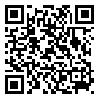
Scientific-Research Quarterly Journal of
Political and International Studies

Volume 2, Issue 2 (9-2025)
SRQPIS 2025, 2(2): 1-26 |
Back to browse issues page
Download citation:
BibTeX | RIS | EndNote | Medlars | ProCite | Reference Manager | RefWorks
Send citation to:



BibTeX | RIS | EndNote | Medlars | ProCite | Reference Manager | RefWorks
Send citation to:
Erfani S T. The US-China Trade War and Its Impact on US Unilateralism. SRQPIS 2025; 2 (2) :1-26
URL: http://srqpis.knu.edu.af/article-1-68-en.html
URL: http://srqpis.knu.edu.af/article-1-68-en.html
Faculty Member, Department of International Relations, Faculty of Law and Political Science, Khatam Al-Nabieen University Afghanistan
Abstract: (320 Views)
One of the important global trends after Donald Trump's victory in 2016 was the emergence and intensification of trade disputes between the United States and its major trading partners. At the sme time, trade tensions between the two leading global economic powers, the United States and China, have been very prominent; as most of scholare refer to it as "trade war." The aim of this article is to examine the impact of the trade war on US unilateralism. The question of the article is what is the impact of US-China trade war on US unilateralism? The hypothesis of the article is that the US-China trade war has weakened US unilateralism and, in order to prevent the decline of US hegemony, the United States seeks to create barriers and increase tariffs on China in order to continue its hegemony. The findings of the researhc show that the trade war between the United States and China is a manifestation of a power transition in the international system. As an emerging power with growing economic power, China is trying to increase its influence and position in the international system through global initiatives. In response to China's rise, the United States is trying to maintain its position as a world leader by imposing trade barriers on China in order to maintain its position in the international system. The United States believes that this strategy can delay the fall of American hegemony. This research analyzes the trade war and its impact on American unilateralism by using an analytical-descriptive method and primary and secondary sources.
Send email to the article author
| Rights and permissions | |
 |
This work is licensed under a Creative Commons Attribution-NonCommercial 4.0 International License. |



